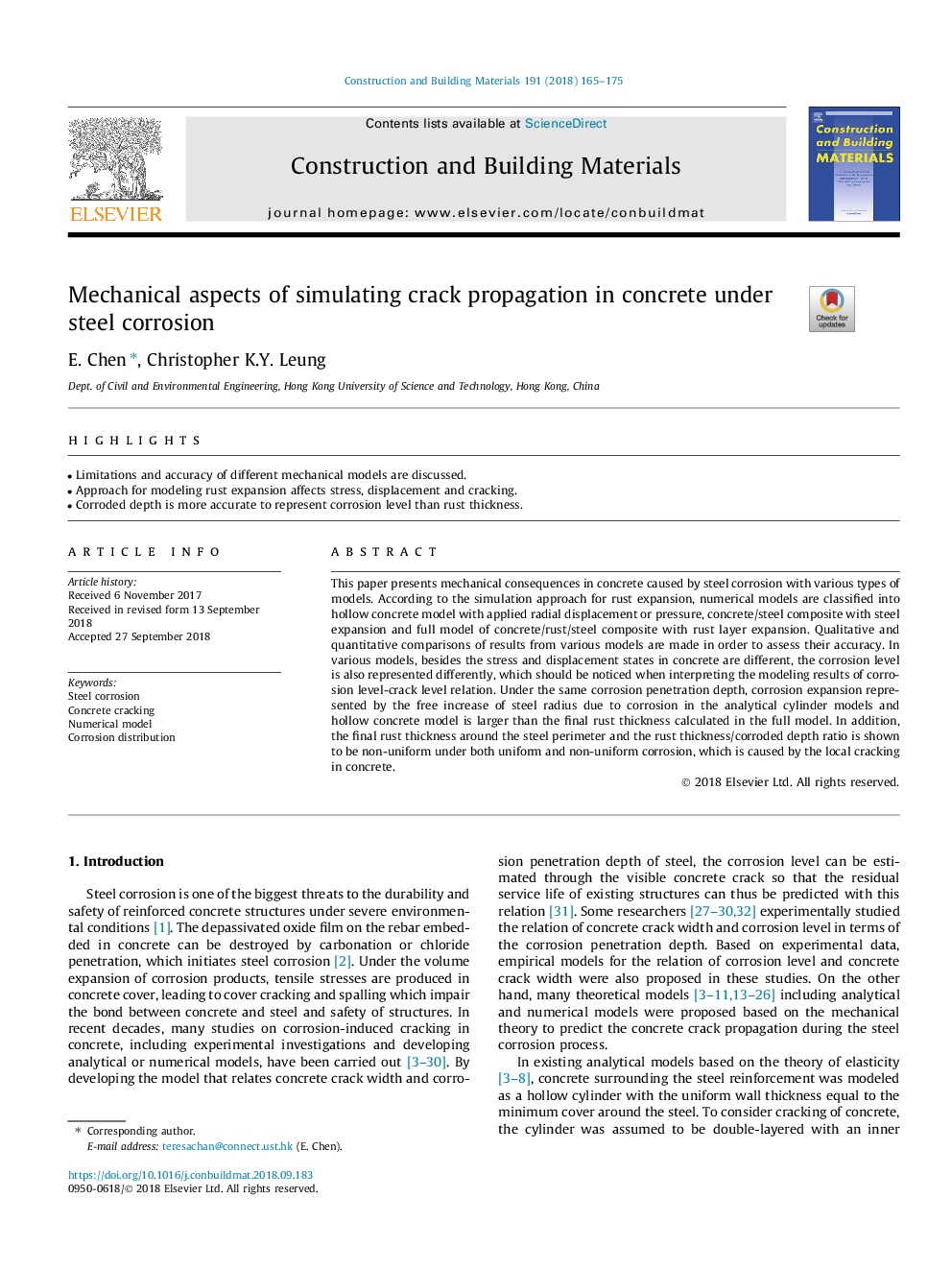| Article ID | Journal | Published Year | Pages | File Type |
|---|---|---|---|---|
| 11012618 | Construction and Building Materials | 2018 | 11 Pages |
Abstract
This paper presents mechanical consequences in concrete caused by steel corrosion with various types of models. According to the simulation approach for rust expansion, numerical models are classified into hollow concrete model with applied radial displacement or pressure, concrete/steel composite with steel expansion and full model of concrete/rust/steel composite with rust layer expansion. Qualitative and quantitative comparisons of results from various models are made in order to assess their accuracy. In various models, besides the stress and displacement states in concrete are different, the corrosion level is also represented differently, which should be noticed when interpreting the modeling results of corrosion level-crack level relation. Under the same corrosion penetration depth, corrosion expansion represented by the free increase of steel radius due to corrosion in the analytical cylinder models and hollow concrete model is larger than the final rust thickness calculated in the full model. In addition, the final rust thickness around the steel perimeter and the rust thickness/corroded depth ratio is shown to be non-uniform under both uniform and non-uniform corrosion, which is caused by the local cracking in concrete.
Related Topics
Physical Sciences and Engineering
Engineering
Civil and Structural Engineering
Authors
E. Chen, Christopher K.Y. Leung,
